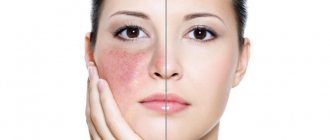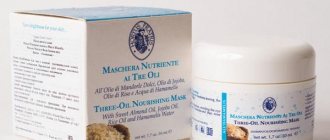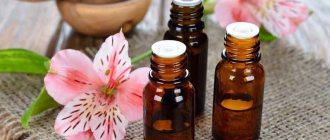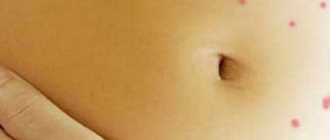- For diseases and damage to the skin
Dermatologists prescribe petroleum jelly and cosmetics containing it to patients with eczema, psoriasis, atopic dermatitis, as well as burns and diabetic complications on the feet.
But it is important to understand that it does not treat the skin, but only alleviates the condition - it heals microtraumas and prevents infections from getting into them. The action of Vaseline is as follows: it creates a protective film on the skin that prevents moisture from evaporating. Does this mean that Vaseline can be used to keep the skin hydrated? Absolutely not. The evaporation of moisture from the surface of the skin is a natural process that is best not to disturb. Moreover, Vaseline is contraindicated for those with dry skin.
- During the cold season
You can use Vaseline in the fall, winter or early spring before going outside for a month. Or apply it throughout the cold period, with breaks of several days - only on the coldest or windiest days.
Benefits of applying Vaseline on the face
Hydration
Vaseline is an oil-based product that forms an oily film on the surface of the skin. This oily film retains moisture, leaving skin hydrated and soft. Vaseline prevents more than 98% of water loss from the outer layer of skin. This type of water loss is known as transepidermal water loss (TEWL). In comparison, mineral oil and lanolin reduce TEWL by about 20-30%.
Creating a Physical Barrier
The same oily film creates a physical barrier on the skin. This barrier protects against harsh elements and environmental pollutants that can damage the skin.
Precautionary measures
The basic safety rule is not to use Vaseline oil unnecessarily, in excessive quantities. Be sure to wash it off your face and don’t leave it on until the morning. When distributing the product over your eyelashes and eyebrows, make sure that it does not get into your eyes: the oily film is difficult to wash off. When taken orally, the course of treatment should last no more than 5 days, otherwise problems with the intestines are possible. Before doing this, it is important to consult a doctor.
Attention! There are no restrictions on external use, but there are contraindications for internal use. These are pregnancy, intestinal obstruction, acute inflammation in the abdominal cavity, etc.
Risks of using Vaseline on the face
Clogged pores
While petroleum jelly helps retain moisture in the skin, some experts have suggested that it can also trap oil and dirt. The American Academy of Dermatology (AAD) warns that acne-prone people may experience clogged pores after applying petroleum jelly to their face. Also, people with oily or acne-prone skin may not like the greasy feeling that Vaseline leaves on the skin.
Skin irritation
According to a 2016 review, there are no reports of people experiencing a severe allergic reaction to petroleum jelly. Less severe allergic skin reactions are rare. However, if a person develops the following symptoms after using Vaseline, they should stop using this product:
- redness or tenderness of the skin
- itching
- swelling or inflammation
Where to buy and how to store
It is best to buy medical or cosmetic oil at a pharmacy. It is sold in dark glass (less often plastic) bottles with a capacity of 25 to 100 ml. The average price is from 30 to 70 rubles. The cost depends on the manufacturer and volume of the bottle.
Attention! Make sure that the product is intended for external or internal use. This is indicated on the bottle or packaging.
The oil can be stored for up to 5 years at a temperature not exceeding +25 °C. Seal the bottle tightly after each use and keep it in a dark place. Vaseline products have a low cost, so they are not counterfeited. Monitor the expiration date and storage conditions.
If you choose Vaseline instead of an oily liquid, know that it can be natural and artificial. The first is obtained from the paraffin resins of plants, the solid - from oil. Natural has antimicrobial properties, but it is very sticky. For this reason, the artificial analogue is sold and used more often.
Using Vaseline
Softening dry skin
The AAD recommends applying petroleum jelly to areas of the face that are prone to dryness, such as lips and eyelids. Applying a small amount of petroleum jelly to slightly damp skin can retain moisture in the skin.
Itching relief
Atopic dermatitis
is a skin condition that causes dry patches, flaking, and itching of the skin. Dermatologists often recommend Vaseline and similar ointments to treat atopic dermatitis. These ointments reduce dryness and flaking of the skin, which contribute to itching.
Helps heal wounds
Vaseline can help heal minor wounds such as cuts and scrapes. Vaseline locks in moisture, preventing the wound from becoming dry and scabbing, which prolongs wound healing. By speeding up wound healing, Vaseline can also prevent the formation of large, deep or itchy scars.
Sealing for other skin care treatments
You can use Vaseline before applying serum or other active ingredients to your skin. The Vaseline will help preserve other skin care products, allowing them to work longer on the skin.
Cosmetic use
Some people apply Vaseline to their cheeks as an alternative to blush.
Reviews
Victoria, Moscow. Good afternoon, I used Vaseline to get rid of wrinkles on my face. I want to say that this is a really good product; in just a month of procedures I was able to achieve an amazing effect.
Marina Omsk. Hello, not long ago I was advised to use Vaseline for wrinkles. My friend recommended this product to me, saying that in this way she managed to regain her former youth. Initially, of course, I was a little doubtful, but nevertheless I decided to try. The result was really noticeable, the skin became smoother, no dryness or wrinkles. I am very pleased!
Alternatives to Vaseline
Several different moisturizing ingredients are suitable for use on the face. They generally fall into three categories: occlusives, emollients and humectants.
Often, skin care product manufacturers combine them to enhance the moisturizing properties of the product.
Occlusive agents
Occlusive agents such as Vaseline create a barrier on the skin and prevent water loss. Two other common occlusive moisturizers are lanolin
and
mineral oil
. However, a 2016 review noted that these ingredients may cause allergic reactions.
Emollient
Emollients are oils and fatty compounds that soften and smooth the skin. Some examples of emollient moisturizers include:
- vegetable oils such as grapeseed, sesame and jojoba oil
- nut butters containing cocoa butter and shea butter
Moisturizers
Humectants are ingredients that bind to water molecules, thereby attracting water into the skin. Two common moisturizers are glycerin
and
hyaluronic acid
.
conclusions
Vaseline is a clean, safe product, but also relatively useless. It is best used if there is a need to protect the skin from external influences, or to prevent moisture evaporation.
And don’t frown if you see Vaseline in any product or cosmetic recipe. Just know the “safety precautions”. The only harm that Vaseline can do is allow the bacteria that are on your skin to multiply. It does not penetrate the skin, so it cannot “poison” you.
Face masks with castor oil and vitamin E
Homemade cosmetics based on castor oil and vitamin E remarkably moisturize and restore the dermis, smooth out wrinkles, eliminate scars, blackheads and acne, reduce skin inflammation, and minimize the harmful effects of ultraviolet rays.
Indications and contraindications
The use of vitamin E masks is recommended for:
- dry, mature, fading, cracked, problematic skin;
- pimples and acne;
- age spots, including freckles;
- blackheads and clogged pores;
- wrinkles and other age-related changes.
Contraindications for use are the presence of open wounds on the skin of the face and intolerance to one of the components of the product.
You can prepare several of these masks at home.
No additional components
This mixture intensively nourishes the dermis in winter and spring, enriching it with vitamins. Prevents the occurrence of premature wrinkles.
To prepare it you will need:
- 2 tbsp. l. castor oil;
- 10 drops of liquid vitamin E.
Application: the ingredients must be combined and applied to cleansed facial skin before bed. After 15 minutes, it is recommended to remove excess product with a dry cloth.
With clay
This mask perfectly moisturizes the skin, adds softness and velvety to it, and effectively fights dryness and fine wrinkles.
Recent entries The best models of sneakers for all occasions: a review of trending brands, their new products and proven flagships Summer trousers 2022: choosing trending colors, styles and fabrics Fashionable clothing styles: trends 2021-2022 for women, men and children of any age and body type
To prepare it you will need:
- 1 tsp. castor oil;
- 1/2 dec. l. vitamin E;
- 1 egg yolk;
- 1 tbsp. l. black cosmetic clay.
Application: black clay should be combined with castor oil, yolk and vitamin E and mixed thoroughly. The resulting mixture should be applied to a cleansed face and after 15 minutes, rinse with warm water.
With glycerin
For daily care of dry, flaky skin, cosmetologists strongly recommend using a mask with castor oil and glycerin.
To prepare it you need:
- 2 tbsp. l. chamomile infusion;
- 1 tbsp. l. castor oil;
- 1 tbsp. l. camphor oil;
- 1 tsp. warm glycerin;
- 20 drops of liquid vitamin E.
Directions for use: fresh chamomile infusion must be mixed with castor and camphor oils, heated glycerin and liquid vitamin E and mixed thoroughly. The resulting mixture should be applied to clean facial skin for 15–20 minutes, and then rinsed off with warm running water.
With yolk
The mask is ideal for combating existing wrinkles.
To prepare it you will need:
- 7 drops of castor oil;
- 1 chicken yolk;
- 1 ampoule of liquid tocopherol.
Directions for use: in a glass container, combine the contents of the ampoule with yolk and castor oil. The resulting composition must be applied to previously cleansed facial skin. After complete drying, the mask should be washed off with a warm decoction of chamomile flowers.
Minuses
You should not believe in an unconditional result after learning only the advantages. It is not recommended to use the product without specifying the specifics of use, as well as without knowledge of the shortcomings. Minuses:
- Lack of useful components in the mixture, that is, no vitamins, minerals, vegetable oils.
- A thick layer will harm the skin, block access to oxygen, which will cause a vacuum effect.
- It does not nourish or moisturize the epidermis, so it cannot be used as a skin cream.
- Only local application of the product is permissible; it is better not to cover it with a continuous layer. Especially before your face is exposed to heat, you can get burned.
The smear should be applied at night, however, after 10 minutes, be sure to collect the excess so as not to harm natural air exchange.
Description of the substance
Vaseline in cosmetology
In 1859, oil was discovered in Pennsylvania. Observing its extraction, the young British chemist Robert August Chesbrough noticed that the pumps were constantly becoming clogged with some kind of black jelly-like substance that smelled unpleasant. However, this mass was later used by workers as a remedy for burns and cuts.
This interested the chemist, and he began studying the substance, which, as it turned out, was a combination of complex hydrocarbons and minerals.
After distillation and purification of the substance, the scientist obtained a colorless gel, which he named “petroleum jelly.” As a result of medical studies that the chemist conducted on himself, it was found that the product is able to protect against infection in wounds and helps restore the skin.
In 1870, the scientist opened the first plant that began producing Vaseline.
"Oil Jelly" was not particularly popular because of its name. Buyers were concerned about the oil's flammability. Therefore, the scientist had to come up with a new name, based on the German word “wasser” - water and the Greek “elaion” - olive oil. In 1878, the invention was patented as a trademark.
In the modern world, the substance is still extracted from oil, after processing which produces a colorless or light yellow fat-like mass without taste or smell. It is used not only for medical purposes, but also for cosmetic, industrial and technical purposes.











